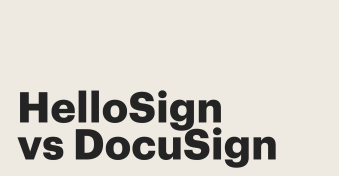You might think that once you’ve got through the preliminary startup funding stages and got your business up and running, the really hard work is more or less done.
In actual fact, it’s only just beginning. The key question that faces you at that stage is how to carve out a solid niche in what will inevitably be a hugely competitive market place.
From online promotions to SEO lead generation, there are a whole host of challenges you’ll have to negotiate when trying to boost sales. Product mapping is a means of meeting some of those challenges, as we’ll explain later.
Boosting sales in a highly competitive environment
Gaining a competitive advantage over your rivals can be incredibly difficult. It’s fair to say that you don’t truly appreciate just how difficult until you’ve had personal experience at the coal face of business.
You must remain in close contact with what consumers want. After all, consumers today are remarkably savvy people, well used to shopping around for the best deals on the products they want.
It’s just not possible to pull the wool over their eyes (and even if it were, it would still be ethically unacceptable). You, therefore, need to work out how you might adapt yourself to this fast-paced competitive environment.
Certainly, there’s a lot of basic hygiene to take care of. This can in itself have an important effect on generating new leads and boosting revenue, as well as tracking how your site is performing.
A Google Analytics agency, for example, will be able to give you a clearer idea of how visitors interact with your site through techniques such as Google Analytics video tracking.
Insights like these will provide you with valuable information and a more in-depth understanding of how people use your website.
In an environment where competition is so fierce and margins are often so tight, this could make a world of difference to your business.
But, having said all that, it’s not enough just to know how your own site is performing. You also need to appreciate what your rivals are doing, and how your offering compares to theirs.
This in turn requires you to have a detailed appreciation of your products and how far they tally with consumer expectations. We’ve already stressed the fast-paced nature of the retail environment.
This both influences and gets influenced by consumer expectations, in an ongoing two-way exchange. So how can you go about building the understanding you need?
Many businesses are turning to product mapping to help tweak their product offering and thus drive increased sales and revenues.
This applies as much to firms selling SaaS products as to those operating in more traditional areas of the consumer market.
Here, we’ll look to provide you with useful tips and hints on how you can use product mapping to boost sales.
But before we do that, we’ll start by offering you a quick overview of what product mapping actually is, and how so many businesses are benefiting from it.
What is product mapping?
A product roadmap, in essence, sketches out a broad strategic outline for a particular product offering.
It provides a general guide to the direction of individual products over time, while also connecting this to wider company objectives.
It not only provides a guide to implementation over a certain period, but it also articulates the underlying strategy behind the products in question.
It includes insights into how it coheres with medium and long-term company goals. These product maps are, therefore, particularly important to sales reps and provide them with essential guidance.
On first glance, product roadmaps provide a chronological list of the products that the company is planning to build over a particular period of time.
You could be forgiven, then, for initially wondering just what all the fuss is about. Appearances can be deceptive, though, as they are in this case.
In fact, product mapping is valuable because it helps teams to prioritize and deploy their resources in the most effective manner.
After all, there’s always a conflict between resource constraints and the development of new ideas into full-fledged products.
A roadmap enables teams to determine with greater firmness and clarity what products should be taken forward and which should be placed on the back burner for the time being.
Drawing up a product roadmap provides a perfect opportunity to put ideas down on paper and determine which of them have the best prospects of success.
It’s peculiar, but ideas that sound promising when they’re being discussed verbally don’t always seem quite as good once they’ve been translated to paper.
This is part of the value of product mapping; it’s a good way of separating the wheat from the chaff. You’ll see the benefit of that when you come to calculate your profit margin.
The point of product mapping, ultimately, is to define products’ underlying benefits and attributes. There are numerous factors to take into consideration here. These will include metrics and costs.
Arranging your thoughts in this way will help to provide you with a more accurate idea of how products are likely to perform once released onto the market.
As well as how far they’re likely totally with consumer and client expectations. When setting out a product roadmap, there are three questions you should ask yourself above all:
- What are we hoping to achieve with this product?
- How will this product help us meet our strategic objectives?
- Will this product meet the expectations and needs of users?
You should also remember that product mapping is never static. It will evolve along with your products, which will themselves change to better meet the requirements of users.
Thus, you should be prepared to build in some flexibility to your product roadmap to account for this. The more established a product is, the easier it will be to integrate it into your roadmap with a greater degree of certainty and vice versa.
Startups, meanwhile, will also generally find it more challenging to predict future product requirements. They’re trying to do this, after all, at the same time as securing their own future viability.
How product mapping can boost sales
So, we’ve discussed what product mapping is and what its various purposes are. But what, specifically, can it do to improve sales? After all, the bottom line is what ultimately counts in business.
You can guarantee, therefore, that your rivals will be using all sorts of techniques in order to gain the upper hand, including micro funnels and sales funnel software.
We’ve given the matter some thought and come up with these five reasons as to why you should be using product mapping in order to boost sales and get the jump on those competitors.
1. Securing long-term deals
One of the key advantages of product mapping is that it can help you secure lucrative deals with those all-important clients who’ll stick with you for the long term.
The essential point to bear in mind here is that to sign a client up on a long-term deal, you’ll need to provide them with a reasonable degree of certainty about what they’re going to get.
If you’ve got a product roadmap, you should be in a better position to provide them with the reassurance they’re looking for.
What you have to remember is that your clients’ purchasing decisions are never simple. The chances are they’ll have to pass through several levels in the chain of command before they can get signed off.
So, if you can help make this process that bit less tortuous, that’s all the better. A product roadmap can greatly assist you in your efforts to make the case for a particular product – and that in turn can help your client get the deal done.
2. Incorporating client feedback
It’s probably the hoariest old cliche in business to say that “the customer is always right”. Whether or not it’s a viewpoint you wholly share, you definitely can’t afford to ignore it altogether.
Not only do clients expect that their feedback will be listened to and acted upon, but it’s actually in your interests to do so.
Firstly because it’ll help you avoid losing valuable clients, and secondly because this feedback can in fact be hugely useful.
Clients don’t generally complain for the sake of it; if they’re raising a point with you, make sure you pay attention.
We’ve already discussed how flexibility is crucial to product mapping, and that needs to include taking account of your client’s opinions of your products.
The fact of the matter is that most products – and especially software solutions – have their fair share of flaws.
The number of flaws, and their severity, will depend on a range of factors, not least the nature of the development process.
Client feedback will make it much easier for you to discover these problems and then go about addressing them. Dealing with flaws and bugs might not be the most eye-catching work, but it can have a huge impact.
So, when clients come to you with some input, don’t fob them off – take it seriously and incorporate it into your roadmap.
3. Prioritize, prioritize, prioritize
A key point of product mapping is that it allows you to prioritize more effectively. We’ve alluded to the constraints on resources that businesses face, including those operating in the SaaS sphere.
It’s never possible to carry all the ideas you have through to completion, so drawing up a product roadmap is as much about filtering as anything else. For startups, the pressure is particularly acute.
Firms that are new to their sector face a struggle simply to establish themselves, as well as innovate in product development.
When you come to draw up your product roadmap, then, you should be prepared to be ruthless. It helps if you can impose a consistent framework so that the decisions you take are consistent.
The precise criteria you ultimately select to form the framework will obviously vary according to your specific needs and those of your – existing and potential – clients.
This is where your team will really earn their corn. When mapping, they must subject each product idea to stringent scrutiny across a range of areas, including opportunity cost, resources required, and overall value.
4. Building client confidence
Clients are skeptical a lot, on the whole. They have a duty to ensure that every penny they spend is spent wisely (or at least to get as close to this as they can).
To commit to a contract they need to be reassured that the product they’re purchasing is the result of serious research and planning.
They need to know that your business can give them what they need at a price that won’t blow out their budget. This is something you need to be prepared for, so think: how can you prove to them that they should have faith in you?
Product mapping can generate new leads in exactly this way. If you can produce a product roadmap, straight away you’re giving your client (or prospect) a reason to have confidence in your business.
This gives the client more power, providing them with the details they need to make an informed decision.
This should go down well with the client, as they’re likely to appreciate your honesty and willingness to give them an in-depth insight into your own workings.
5. Simplifying internal communications
Another, and often overlooked, an advantage of product mapping is that it helps to clarify responsibilities and the allocation of tasks internally.
In other words, it provides the members of your team with a clearer overview of what needs to be done and by whom. The importance of this shouldn’t be underestimated.
A confused and muddled division of labor can be seriously draining, tying up resources that could be used more effectively elsewhere.
Of course, your internal product roadmap doesn’t necessarily have to be precisely the same as your client-facing one.
There may be information you include in the former that would be better left out of the latter (especially if it isn’t of direct interest or relevance to the individual client).
Nevertheless, by clarifying duties and responsibilities among your team, you can allow them to save time and effort.
They can then be redeployed with a view to improving productivity and potentially driving new sales.


